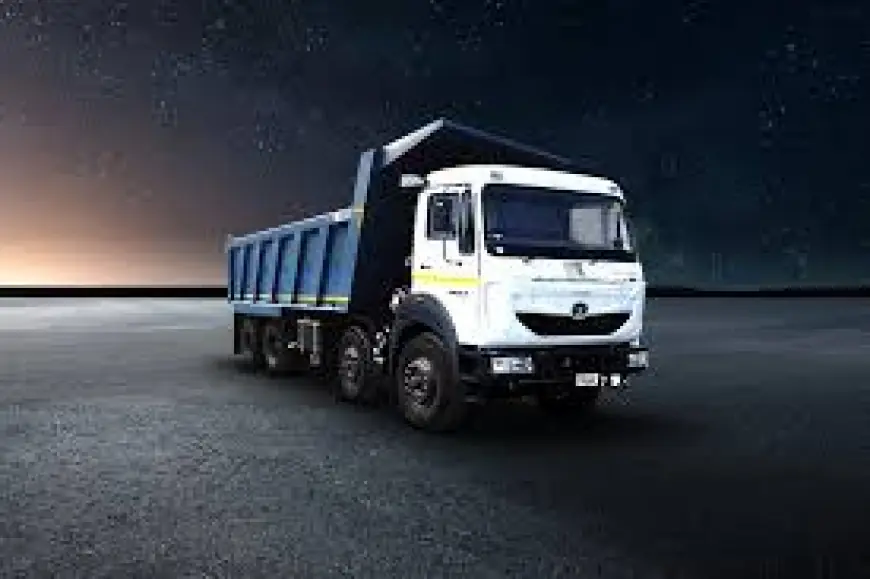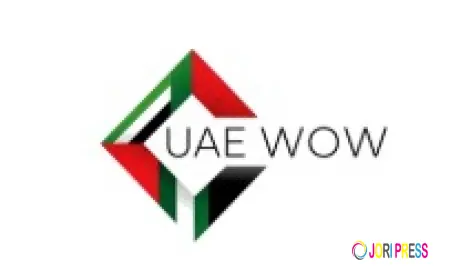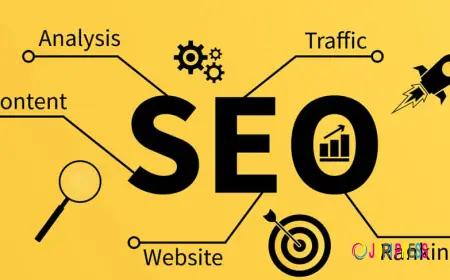Market Forces Shaping Indonesia Commercial Vehicle 2030
Indonesia’s infrastructure growth fosters improved transportation efficiency, with better roads and logistics hubs enabling faster movement of goods.

The Indonesia commercial vehicle market is undergoing a transformative phase driven by structural shifts in industry demands, digital disruption, and government-led policy initiatives. According to recent projections, the market—valued at USD 29.32 billion in 2024—is expected to grow at a CAGR of 7.80%, reaching USD 46.02 billion by 2030. This growth is not only indicative of the sheer volume of vehicle demand but also reflective of how Indonesia is reimagining its logistics and transportation ecosystem.
Emerging Trends Shaping the Market
1. Electrification of Commercial Transport
The most groundbreaking trend is the electrification of Indonesia's commercial vehicle fleet. With electric commercial vehicles (EVs) recording the fastest growth in 2024, the transition away from internal combustion engine (ICE) vehicles is well underway. Government incentives, such as import tax waivers and preferential financing for EVs, have made electric fleets increasingly attractive to logistics operators and fleet owners. Battery manufacturing has taken off, enabled by Indonesia's massive nickel reserves—an essential input in lithium-ion batteries.
2. Rise of Tech-Driven Fleet Management
Telematics, AI, and predictive maintenance solutions are no longer optional but essential. Logistics companies and fleet managers are using real-time data to optimize delivery routes, monitor driver behavior, and prevent vehicle downtimes. The adoption of smart technologies has enabled businesses to reduce fuel consumption, improve safety, and extend vehicle lifespans.
3. Localized Production and Supply Chain Integration
Under the "Making Indonesia 4.0" roadmap, domestic vehicle manufacturing is being encouraged through localization of component production and assembly. This has lowered production costs and enhanced supply chain resilience. More importantly, it has opened the door for regional assembly centers in provinces like West Java and East Kalimantan, cutting down transport and logistics costs for commercial vehicle deployment.
4. Demand from MSMEs and E-commerce
The proliferation of MSMEs and the boom in e-commerce have created a need for agile and versatile transport solutions. Last-mile delivery has become a significant driver for the light commercial vehicle (LCV) segment. Urban logistics now demands compact, efficient vehicles that can handle frequent stops, tight alleys, and heavy usage with minimal operational expense.
5. Growth in Financing Options
With the rise of fintech platforms, access to vehicle financing has improved significantly, especially in Tier-2 and Tier-3 cities. From pay-as-you-go leasing models to AI-based risk assessments for loan approvals, the commercial vehicle market has become more accessible to small business owners and independent operators.
Download Free Sample Report: https://www.techsciresearch.com/sample-report.aspx?cid=8116
Key Market Drivers
Infrastructure Development
As Indonesia continues to invest in large-scale infrastructure—roads, ports, dry docks, and special economic zones—the commercial vehicle market finds a solid foundation for growth. The new capital city project in East Kalimantan alone is expected to stimulate long-term demand for construction trucks, vans, and support vehicles.
Government Policy Support
The Indonesian government has created an ecosystem that supports the growth of both ICE and electric vehicles through subsidies, tax breaks, and logistics zone development. Emissions regulations and toll waivers for EVs are nudging fleets toward greener alternatives.
Fleet Modernization and Safety Regulations
There is a growing emphasis on driver welfare, vehicle safety, and operational efficiency. Features like ergonomic cabin design, air conditioning, fatigue-reduction technology, and anti-lock braking systems (ABS) are becoming standard.
Decarbonization and Green Mobility
Urban emissions regulations are tightening, and businesses are being held accountable for their environmental footprints. The shift to electric and hybrid commercial vehicles is driven not just by cost but by social responsibility and long-term sustainability mandates.
Industry Key Highlights
- The market is forecast to grow from USD 29.32 billion in 2024 to USD 46.02 billion by 2030.
- Electric commercial vehicles recorded the fastest year-over-year growth among all propulsion types in 2024.
- Kalimantan emerged as the fastest-growing regional market due to mining, construction, and logistics expansion.
- Fleet digitalization is on the rise with real-time monitoring and predictive analytics tools gaining traction.
- Local manufacturing has accelerated, reducing dependence on imports.
Segmentation Snapshot
- By Propulsion: Internal Combustion Engine (ICE), Electric, Hybrid
- By Transmission: Automatic, Manual
- By Vehicle Type: Truck, Bus/Van
- By Region: Java, Sumatra, Kalimantan, Sulawesi, Others
Regional Spotlight: Kalimantan
Kalimantan outpaced other regions in 2024 in terms of commercial vehicle demand. Key reasons include its strategic role in mining and palm oil industries, along with the government's ambitious infrastructure development. Enhanced logistics integration, streamlined licensing, and the national capital relocation to East Kalimantan contributed to a boom in vehicle requirements—from dump trucks to fuel tankers to LCVs for support services.
Future Outlook
By 2030, Indonesia's commercial vehicle market is expected to evolve into a highly diversified and technology-enabled ecosystem. Light commercial electric vehicles will become mainstream, with supportive infrastructure such as public and private charging hubs. Fleet owners will increasingly adopt zero-emission targets as part of ESG (Environmental, Social, and Governance) compliance. Local vehicle manufacturing is set to achieve global standards, opening opportunities for export markets.
Digital transformation will enable a connected fleet ecosystem where vehicles communicate not just with each other but also with warehouses, supply chains, and traffic management systems. Government partnerships with OEMs (Original Equipment Manufacturers) and technology firms will play a critical role in creating this smart transport future.
Competitive Landscape
The Indonesia commercial vehicle market is moderately consolidated, with a mix of domestic manufacturers, global players, and new-age EV-focused startups. Major players include:
- Mitsubishi Motors Krama Yudha Indonesia – A leader in light and heavy commercial segments.
- PT Astra Daihatsu Motor – Known for small trucks and urban utility vehicles.
- PT HINO Indonesia – Strong presence in mid-sized and heavy-duty trucks.
- Suzuki Indonesia – Focuses on vans and compact delivery vehicles.
- PT Tata Motors Indonesia – Gaining ground in the utility vehicle segment.
- UD Trucks Corp & Isuzu Astra Motor Indonesia – Renowned for durable logistics and construction vehicles.
- PT Daimler Commercial Vehicles Indonesia – Premium offerings and expanding EV capabilities.
- PT Maxindo Renault Indonesia – Increasing focus on fleet sales and electric vans.
The rising demand for EVs has attracted new entrants, including local startups and joint ventures focused on electric drivetrain solutions. Service networks and financing partnerships are becoming key differentiators.
10 Key Benefits of the Research Report
- Data-Driven Insights: Comprehensive analysis of market size, trends, and forecasts through 2030.
- Competitive Intelligence: Profiles of major industry players with SWOT analysis.
- Technology Outlook: Covers EVs, predictive maintenance, and telematics trends.
- Segmental Analysis: Clear breakdown by propulsion, vehicle type, and transmission.
- Regional Analysis: In-depth review of growth across Kalimantan, Java, Sumatra, etc.
- Policy Impact Review: Evaluates the role of government initiatives on market growth.
- Strategic Recommendations: Guidance for new entrants, OEMs, and logistics providers.
- Emerging Opportunity Zones: Highlights high-growth niches and sectors.
- EV Market Deep Dive: Special section on the fast-evolving electric vehicle ecosystem.
- Market Entry Feasibility: Risk assessment and growth outlook for stakeholders.
Final Thoughts
Indonesia's commercial vehicle market is no longer defined merely by industrial freight and public buses. It is transitioning into a complex network of smart, clean, and efficient mobility solutions tailored to a growing digital economy. From the rise of electric trucks to smart logistics and regional manufacturing hubs, the transformation is well underway.
For stakeholders across the value chain—from OEMs and logistics firms to policy makers and investors—this is the time to innovate, collaborate, and lead. With the right investments and strategic decisions, Indonesia's commercial vehicle sector can set a benchmark for Southeast Asia and beyond by 2030.
Contact Us-
Mr. Ken Mathews
708 Third Avenue,
Manhattan, NY,
New York – 10017
Tel: +1-646-360-1656
Email: [email protected]
Website: www.techsciresearch.com
What's Your Reaction?
 Like
0
Like
0
 Dislike
0
Dislike
0
 Love
0
Love
0
 Funny
0
Funny
0
 Angry
0
Angry
0
 Sad
0
Sad
0
 Wow
0
Wow
0



















































